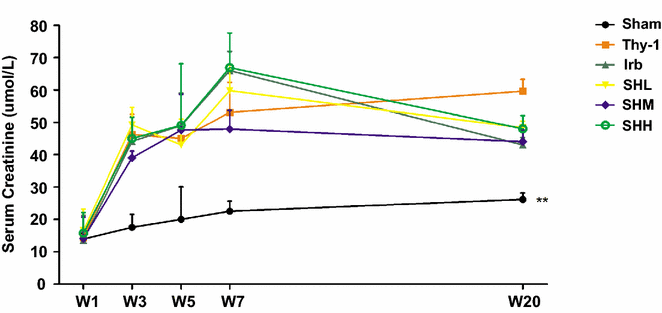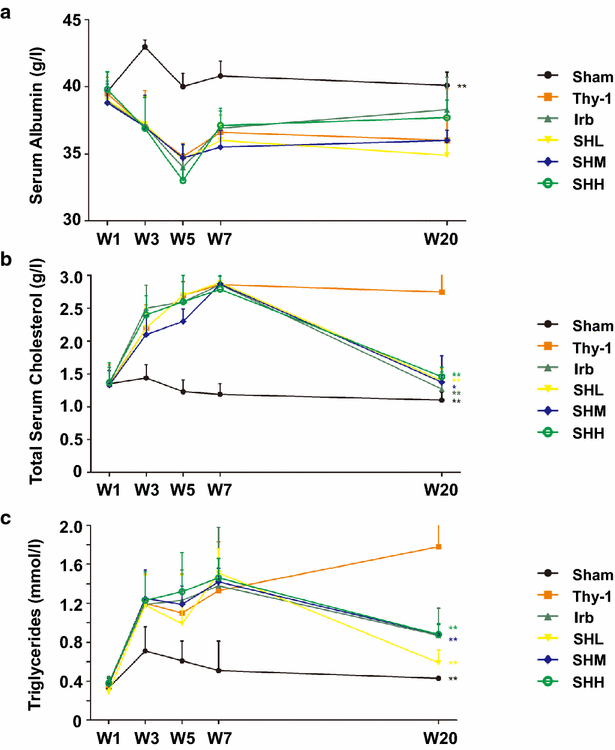Shenhua Tablet inhibits mesangial cell proliferation in rats with chronic anti-Thy-1 nephritis
- PMID: 26969153
- PMCID: PMC4788853
- DOI: 10.1186/s40659-016-0078-3
Shenhua Tablet inhibits mesangial cell proliferation in rats with chronic anti-Thy-1 nephritis
Abstract
Background: In China, mesangial proliferative glomerulonephritis (MsPGN) is one of the most common kidney diseases. In this study, we treated a rat model of chronic anti-Thy-1 MsPGN with Shenhua Tablet and evaluated whether the tablet was able to protect the kidney function. Thirty-six Wistar rats were randomly divided into six groups: (1) Sham surgery (Sham); (2) anti-Thy-1 nephritis model (Thy-1); (3) anti-Thy-1 nephritis model + irbesartan-treated (Irb); (4) anti-Thy-1 nephritis model + low-dose of Shenhua Tablet (SHL); (5) anti-Thy-1 nephritis model + medium-dose of Shenhua Tablet (SHM); (6) anti-Thy-1 nephritis model + high-dose of Shenhua Tablet (SHH).
Results: Thirteen weeks after drug treatment, urinary proteins were quantified and renal pathological changes were thoroughly examined at the time point of 24 h. Meanwhile, the expression levels of p-Erk1/2, cyclin D1 and p21 at the renal cortex were also tested. The levels of urinary proteins and total cholesterol in the blood were significantly reduced in rats treated with any drug tested in this study. The level of triglyceride was significantly reduced in all three Shenhua Tablet-treated groups. Renal pathomorphological scores were significantly improved in groups of Irb, SHM and SHH. Mesangial cell proliferation was significantly inhibited in any drug-treated group. p-Erk1/2 and cyclin D1 were downregulated whereas p21 was upregulated in the renal cortex.
Conclusions: Our study indicated that Shenhua Tablet is able to inhibit the abnormal proliferation of mesangial cells and to prevent kidney damage, which is likely associated with downregulation of p-Erk1/2 and reduced activity of its downstream target-cyclin D1.
Keywords: Chronic anti-Thy-1 glomerulonephritis; Erk; Mesangial cell proliferation; Shenhua Tablet.
Figures






References
Publication types
MeSH terms
Substances
LinkOut - more resources
Full Text Sources
Other Literature Sources
Research Materials
Miscellaneous

